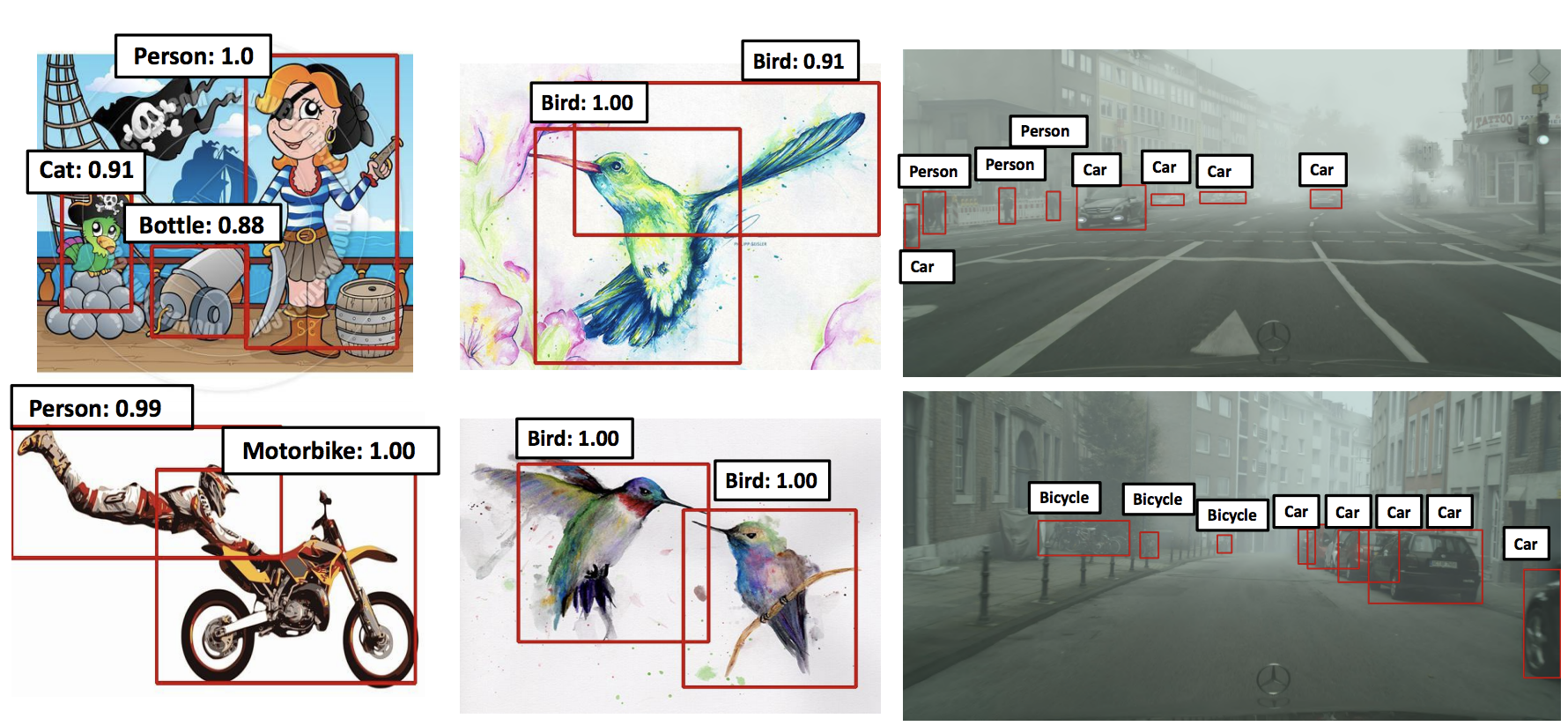A Pytorch Implementation of Strong-Weak Distribution Alignment for Adaptive Object Detection (CVPR 2019)
Follow faster-rcnn repository to setup the environment. When installing pytorch-faster-rcnn, you may encounter some issues. Many issues have been reported there to setup the environment. We used Pytorch 0.4.0 for this project. The different version of pytorch will cause some errors, which have to be handled based on each envirionment.
- PASCAL_VOC 07+12: Please follow the instructions in py-faster-rcnn to prepare VOC datasets.
- Clipart, WaterColor: Dataset preparation instruction link Cross Domain Detection . Images translated by Cyclegan are available in the website.
- Sim10k: Website Sim10k
- Cityscape-Translated Sim10k: TBA
- CitysScape, FoggyCityscape: Download website Cityscape, see dataset preparation code in DA-Faster RCNN
All codes are written to fit for the format of PASCAL_VOC. For example, the dataset Sim10k is stored as follows.
$ cd Sim10k/VOC2012/
$ ls
Annotations ImageSets JPEGImages
$ cat ImageSets/Main/val.txt
3384827.jpg
3384828.jpg
3384829.jpg
.
.
.
If you want to test the code on your own dataset, arange the dataset in the format of PASCAL, make dataset class in lib/datasets/. and add it to lib/datasets/factory.py, lib/datasets/config_dataset.py. Then, add the dataset option to lib/model/utils/parser_func.py.
Write your dataset directories' paths in lib/datasets/config_dataset.py.
We used two models pre-trained on ImageNet in our experiments, VGG and ResNet101. You can download these two models from:
Download them and write the path in __C.VGG_PATH and __C.RESNET_PATH at lib/model/utils/config.py.
Global-local alignment model for watercolor dataset.
- ResNet101 (adapted to water color) GoogleDrive
- Sample training script is in a folder, train_scripts.
- With only local alignment loss,
CUDA_VISIBLE_DEVICES=$GPU_ID python trainval_net_local.py \
--dataset source_dataset --dataset_t target_dataset --net vgg16 \
--cuda
Add --lc when using context-vector based regularization loss.
- With only global alignment loss,
CUDA_VISIBLE_DEVICES=$GPU_ID python trainval_net_global.py \
--dataset source_dataset --dataset_t target_dataset --net vgg16 \
--cuda
Add --gc when using context-vector based regularization loss.
- With global and local alignment loss,
CUDA_VISIBLE_DEVICES=$GPU_ID python trainval_net_global_local.py \
--dataset source_dataset --dataset_t target_dataset --net vgg16 \
--cuda
Add --lc and --gc when using context-vector based regularization loss.
- Sample test script is in a folder, test_scripts.
CUDA_VISIBLE_DEVICES=$GPU_ID python test_net_global_local.py \
--dataset target_dataset --net vgg16 \
--cuda --lc --gc --load_name path_to_model
Please cite the following reference if you utilize this repository for your project.
@article{saito2018strong,
title={Strong-Weak Distribution Alignment for Adaptive Object Detection},
author={Saito, Kuniaki and Ushiku, Yoshitaka and Harada, Tatsuya and Saenko, Kate},
journal={arXiv},
year={2018}
}
